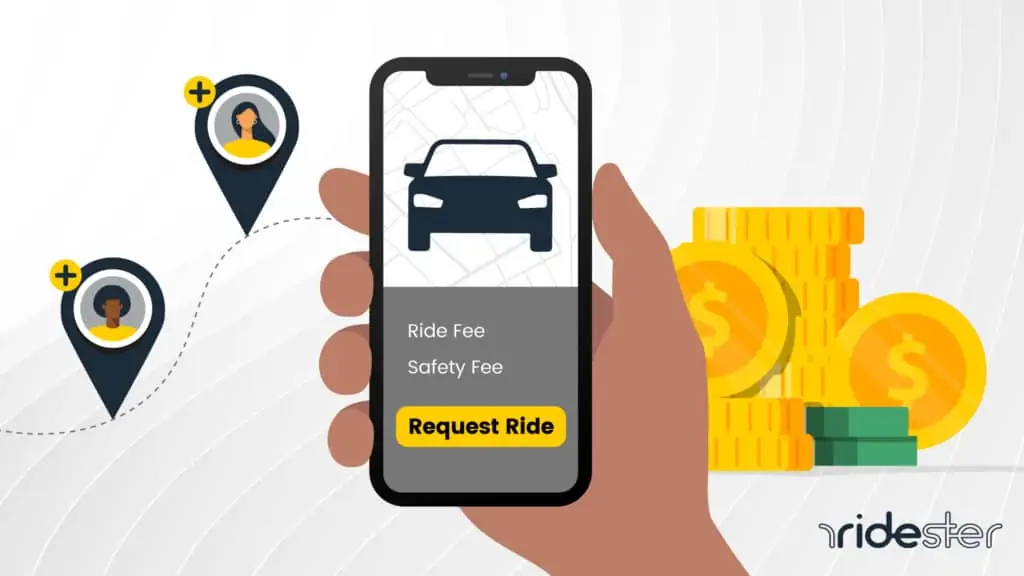Chapter 3
How Much Does Ridesharing Cost?
The typical costs and ride fares that you can expect as a rideshare rider.

Ridesharing is an affordable alternative to taking a taxi or renting a car. Although, taking one will probably cost much less than you might expect.
The cost of your ride will depend on how far you’re traveling and how long it takes you to get there.
You may also be charged more for things like traveling during rush hour or limited driver availability.
Every rideshare app will have its own unique cost structure.
Some will have flat-rate pricing, while others will have dynamic pricing depending on factors like how far you’re driving.
The more popular cost structure for rideshare apps is dynamic pricing.
Your fare will follow a formula that typically has a base rate, distance traveled rate, and time in vehicle rate.
There may also be an additional charge that some companies refer to as surge pricing.
There may also be an additional charge that some companies refer to as surge pricing.
Surge pricing will multiply your fare depending on factors like traffic, time of day, events in your city, or driver availability.
Although less popular, some rideshare apps use flat-rate pricing.
This means you’ll pay a set fee for your ride regardless of how long it takes you to get there.
You can use sites like Rideguru and Bellhop to estimate fares.
Every rideshare company strives to be affordable so the average person can benefit from the service.
Because Uber and Lyft are so widespread, they have competitive pricing.
You’ll have to check the apps to see which site offers the cheapest ride at a particular time.
Is There Anything Cheaper Than Uber?
Lyft is often cheaper than Uber.
Prices across apps fluctuate according to driver availability and passenger demand.
Peak times can also cause price surges.
But Lyft is Uber’s most competitive app in the United States.
Both Uber and Lyft operate using similar models that appeal to gig workers.
They allow drivers to be active on the app whenever they’re free to pick up passengers.
Drivers can select any riders available, regardless of the range.
The apps charge passengers according to a set base rate.
They add on fees for the total miles traveled, but those fees can vary according to the time of day.
If passengers request a specific vehicle, there’s an additional charge for that choice.
Passengers can add a tip after their rides, and both apps allow drivers to keep the entire bonus.
However, Lyft had a tip option from the beginning, while Uber didn’t add that perk until 2017.
As a result, Uber drivers did not receive a tip as frequently as Lyft drivers, which impacted their earnings.
Uber takes a 25% commission from the fares, which is higher than Lyft’s 20% commission.
The companies also get paid when the passenger books the fare.
This booking fee comes directly from the passenger and doesn’t factor into driver earnings.
Because the passenger is paying the booking fee, that amount might impact how much they tip.
So, in reality, any rideshare company will make more from each ride, even though the driver is doing the work.
What you earn from ridesharing depends on what you put into it.
If you’re available at peak times, you can make a lot more money than when you’re driving around with no passengers to pick up.
Overall, Lyft drivers make more money since the company takes less commission from each ride.
But before you try to calculate your earnings, you have to remember that you’ll be paying for gas, insurance, and vehicle maintenance.

